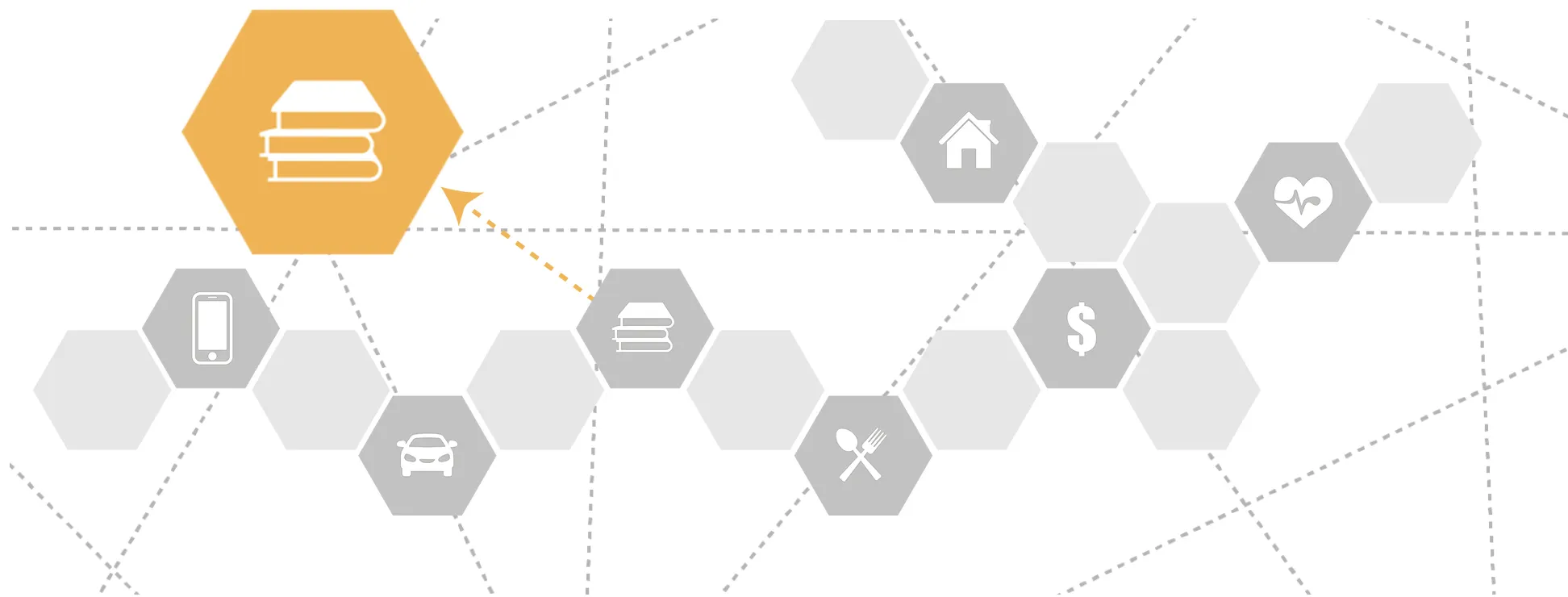
|
Housingclick to view |

|
Health Careclick to view |

|
Child Care and Educationclick to view |

|
Technologyclick to view |

|
Foodclick to view |

|
Taxesclick to view |

|
Transportationclick to view |
||
Future Trends: Child Care and Education for ALICE Families
Changing family configurations will make it harder for child care providers to stay in business.The number of families with children has been decreasing for the last decade, and at the same time, the composition of families is changing. There are fewer families with married parents and an increasing number of single-parent families (both male- and female-headed), blended families, grandparent-headed families, and LGBTQ+ families. With fewer children, there will be less demand for child care, and some centers will struggle to be viable. Since single-parent families are still more likely to live in poverty or to be ALICE, they will also struggle to afford quality child care. The overall trend, then, is toward fewer families with children, but more who are struggling.71
The child care industry is dominated by single proprietors, small businesses that are susceptible to changes in the job market.More than 80 percent of child care operators are sole proprietors. They are challenged by a fluctuating employment market, families with increasingly variable schedules, and the low reimbursement rates of vouchers, which have not kept pace with costs. Many have been forced to close when there are dips in the local and national economy.72
Child care arrangements with a relative will continue to be the most commonly used form of care. Given the ongoing issues with the changing workforce as well as the cost and availability of child care, families will continue to use the lowest cost, most flexible child care arrangements. The high cost of both center-based and home-based child care, even with sliding-scale fees and vouchers, means that many ALICE and poverty-level families cannot afford formal care. Without the expansion of public funding, the share of children who have no regular, formal child care arrangements at all will persist, or even increase.73
Low-paid child care workers are ALICE. Keeping costs down in child care means limiting wages for child care workers. Nationally, the average hourly wage for child care workers was $10.72 (or $21,440 annually) in 2017 — so low that nearly half of child care workers received public assistance.74 Since the quality of any early learning setting is directly related to the quality of its staff, the lowest-cost child care providers will have difficulty attracting the most talented educators, and quality will suffer.75
The role of charter schools is increasing. One response to the persistence of the achievement gap and the perception that public schools are not meeting the needs of many students has been the creation of charter schools (publicly funded but run by independent nonprofit boards). Since 2000, charter school enrollment has increased from 300,000 to 2.3 million nationwide, with 4.6 percent of public school students attending a charter school. The efficacy of charter schools is widely debated and varies greatly from school to school and state to state.76
Earning potential will continue to be tied to education level — and area of expertise.For students who do attend and graduate from college, there is a wide disparity in employment and earnings based on their major or certificate degree. Degrees that provide technical training (such as engineering, math, or computer science), or majors that are geared toward growing parts of the economy (such as education and health care) translate into higher earnings after graduation. Degrees that provide less technical and more general training translate into lower earnings in the marketplace, leading to many well-educated households not being able to afford basic necessities.77 For example, the median annual salaries for new workers (up to five years on the job) range from $33,400 for an early childhood educator to $82,700 for a petroleum engineer.78
Sources
71
Vespa, J., Lewis, J. M., & Kreider, R. M. (2013, August). America’s families and living arrangements: 2012, population characteristics. U.S. Census Bureau. Retrieved from https://www.census.gov/prod/2013pubs/p20-570.pdf
72
U.S. Small Business Administration. (2018). Small business profile: United States. Retrieved from https://www.sba.gov/sites/default/files/advocacy/2018-Small-Business-Profiles-US.pdf
Laughlin, L. (2013, April). Who’s minding the kids? Child care arrangements: Spring 2011. Retrieved from Household Economic Studies, U.S. Census Bureau: https://www.census.gov/prod/2013pubs/p70-135.pdf
73
Child Care Aware. (2018). The US and the high cost of child care: 2018. Retrieved from http://usa.childcareaware.org/advocacy-public-policy/resources/research/costofcare/
Laughlin, L. (2013, April). Who’s minding the kids? Child care arrangements: Spring 2011. Retrieved from Household Economic Studies, U.S. Census Bureau: https://www.census.gov/prod/2013pubs/p70-135.pdf
74
Bureau of Labor Statistics. (2017). Occupational employment statistics: OES data. U.S. Department of Labor. Retrieved from https://www.bls.gov/oes/tables.htm
Ludden, J. (2016). Poverty wages for U.S. child care workers may be behind high turnover. NPR. Retrieved from http://www.npr.org/sections/health-shots/2016/11/07/500407637/poverty-wages-for-u-s-child-care-workers-may-be-behind-high-turnover
75
Ludden, J. (2016). Poverty wages for U.S. child care workers may be behind high turnover. NPR. Retrieved from http://www.npr.org/sections/health-shots/2016/11/07/500407637/poverty-wages-for-u-s-child-care-workers-may-be-behind-high-turnover
76
Center for Research on Education Outcomes (CREDO). (2015). Urban charter school study report on 41 regions. Stanford University. Retrieved from https://urbancharters.stanford.edu/download/Urban%20Charter%20School%20Study%20Report%20on%2041%20Regions.pdf
77
Carnevale, A., Rose, S., & Cheah, B. (2014). The college payoff: Education, occupations, lifetime earnings. Georgetown University, Center on Education and the Workforce. Retrieved from https://cew.georgetown.edu/wp-content/uploads/2014/11/collegepayoff-complete.pdf
Abel, J., Deitz, R., & Su, Y. (2014). Are recent college graduates finding good jobs? Current Issues in Economics and Finance, 20(1), 1–8. Retrieved from http://www.newyorkfed.org/research/current_issues/ci20-1.pdf
78
PayScale. (2019). College salary report. Retrieved from https://www.payscale.com/college-salary-report

